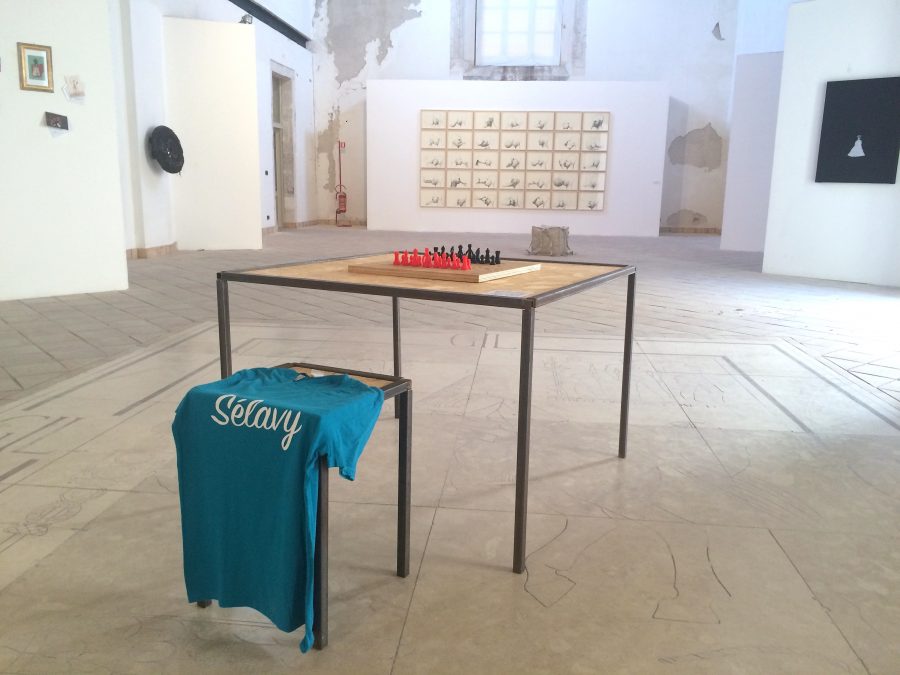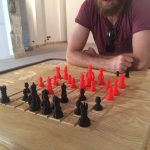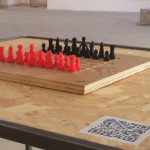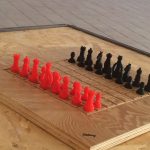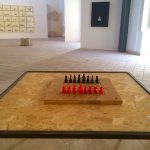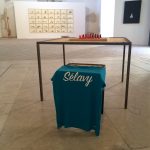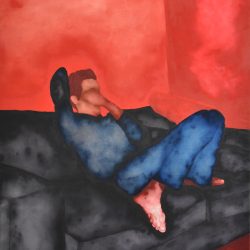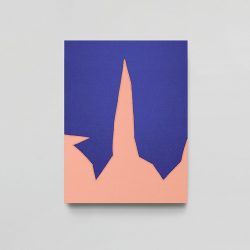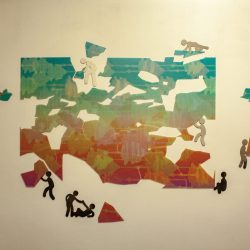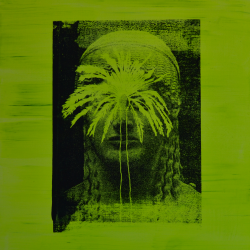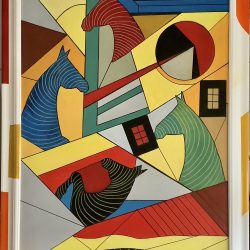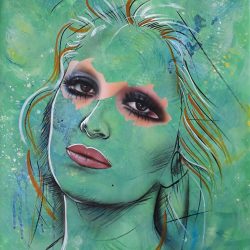work
Sélavy – HOMAGE TO DUCHAMP, CONVENTO DEL RITIRO, SIRACUSA
| category | Installation |
| subject | Political / Social, Beauty, Architecture |
| tags | performace, scacchi, gioco, luce , Duchamp |
| base | 2000 cm |
| height | 2000 cm |
| depth | 100 cm |
| year | 2016 |
BICYCLE WHEELS (HOMAGE TO DUCHAMP), CONVENTO DEL RITIRO, SIRACUSA (ITALY, 2016)
Duchamp was an enigmatic artist, his ready-mades are any objects taken and placed in a museum or gallery as art objects. This process is the same as capitalism which returns to an object to then be a work of art. Perhaps Duchamp did not know that this action would revolutionize the history of art, his message was so powerful that a current was created after Dadaism, post-Dadaism, influencing American, German, French, Italian artists, etc. The thing what strikes me the most in his life is his sudden interruption in the artistic process, perhaps out of boredom or because he could no longer tolerate the artistic environment or perhaps because he thought he had said it all with his works. Duchamp was an influential artist in the art scene between America and France, my work highlights Duchamp's interruption from the art world not as a break but as an end which however would seem to be his last artistic act: to play chess. It is said that when the artist played chess in the circles of Paris, he created a real artistic process with his opponents and the game itself. My work intends to bring this final process of Duchamp's life into a current contemporaneity of the present day. What would Duchamp do today? There are endless technological discoveries at his disposal, and Duchamp also ironically expressed his desire to never work. So I thought of evoking the action of Duchamp who, through a 3D printer and a numerical control machine, produced from home without making the effort to go out and buy a ready-made chessboard at a general store, but to build it through the action of a machine and thus creating in turn the total abolition of the artist's creative act which is in all his Dada philosophy. For me, this imagined final act of making the chessboard by means of a machine is its true and last reade-made. During the days of the exhibition, I will wear a t-shirt with < Sèlavy> written by Rrose Sèlavy, Duchamp's female alter ego, and I will play chess made by a numerically controlled 3D printer with the public. The performance is a way to evoke the memory of Duchamp and bring him back to our contemporaneity, a work on memory. Next to the chessboard there will be a Qrcode sticker on which, placing the mobile phone, he will download the video where Duchamp and Man Ray play chess on a terrace in Paris, Entr'acte masterpiece film that Rene Claire directed in 1924. The performance will not be random there will be a pre-established day also because the artist has never given himself time rules when working on his works. On the table there will be a stamp engraved with the title of the performance which I will use to stamp the skin of the people I will play with in order to have a memory of having played with Duchamp, even if I really have the n. 0
Installation - wood, iron, 3d printer, numerical control printer, t-shirt, tattoo, unique piece
Duchamp was an enigmatic artist, his ready-mades are any objects taken and placed in a museum or gallery as art objects. This process is the same as capitalism which returns to an object to then be a work of art. Perhaps Duchamp did not know that this action would revolutionize the history of art, his message was so powerful that a current was created after Dadaism, post-Dadaism, influencing American, German, French, Italian artists, etc. The thing what strikes me the most in his life is his sudden interruption in the artistic process, perhaps out of boredom or because he could no longer tolerate the artistic environment or perhaps because he thought he had said it all with his works. Duchamp was an influential artist in the art scene between America and France, my work highlights Duchamp's interruption from the art world not as a break but as an end which however would seem to be his last artistic act: to play chess. It is said that when the artist played chess in the circles of Paris, he created a real artistic process with his opponents and the game itself. My work intends to bring this final process of Duchamp's life into a current contemporaneity of the present day. What would Duchamp do today? There are endless technological discoveries at his disposal, and Duchamp also ironically expressed his desire to never work. So I thought of evoking the action of Duchamp who, through a 3D printer and a numerical control machine, produced from home without making the effort to go out and buy a ready-made chessboard at a general store, but to build it through the action of a machine and thus creating in turn the total abolition of the artist's creative act which is in all his Dada philosophy. For me, this imagined final act of making the chessboard by means of a machine is its true and last reade-made. During the days of the exhibition, I will wear a t-shirt with < Sèlavy> written by Rrose Sèlavy, Duchamp's female alter ego, and I will play chess made by a numerically controlled 3D printer with the public. The performance is a way to evoke the memory of Duchamp and bring him back to our contemporaneity, a work on memory. Next to the chessboard there will be a Qrcode sticker on which, placing the mobile phone, he will download the video where Duchamp and Man Ray play chess on a terrace in Paris, Entr'acte masterpiece film that Rene Claire directed in 1924. The performance will not be random there will be a pre-established day also because the artist has never given himself time rules when working on his works. On the table there will be a stamp engraved with the title of the performance
Installation - wood, iron, 3d printer, numerical control printer, t-shirt, tattoo, unique piece



